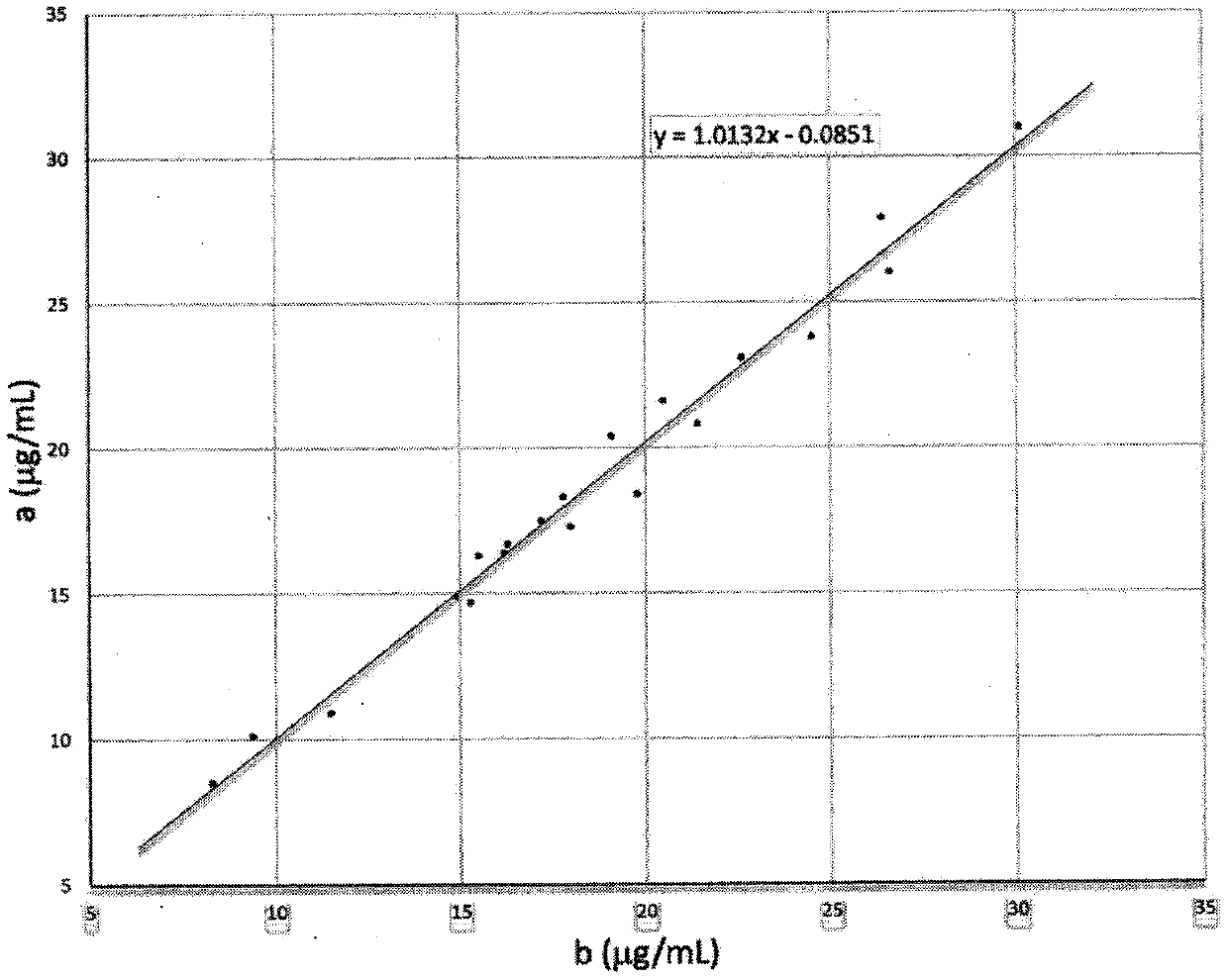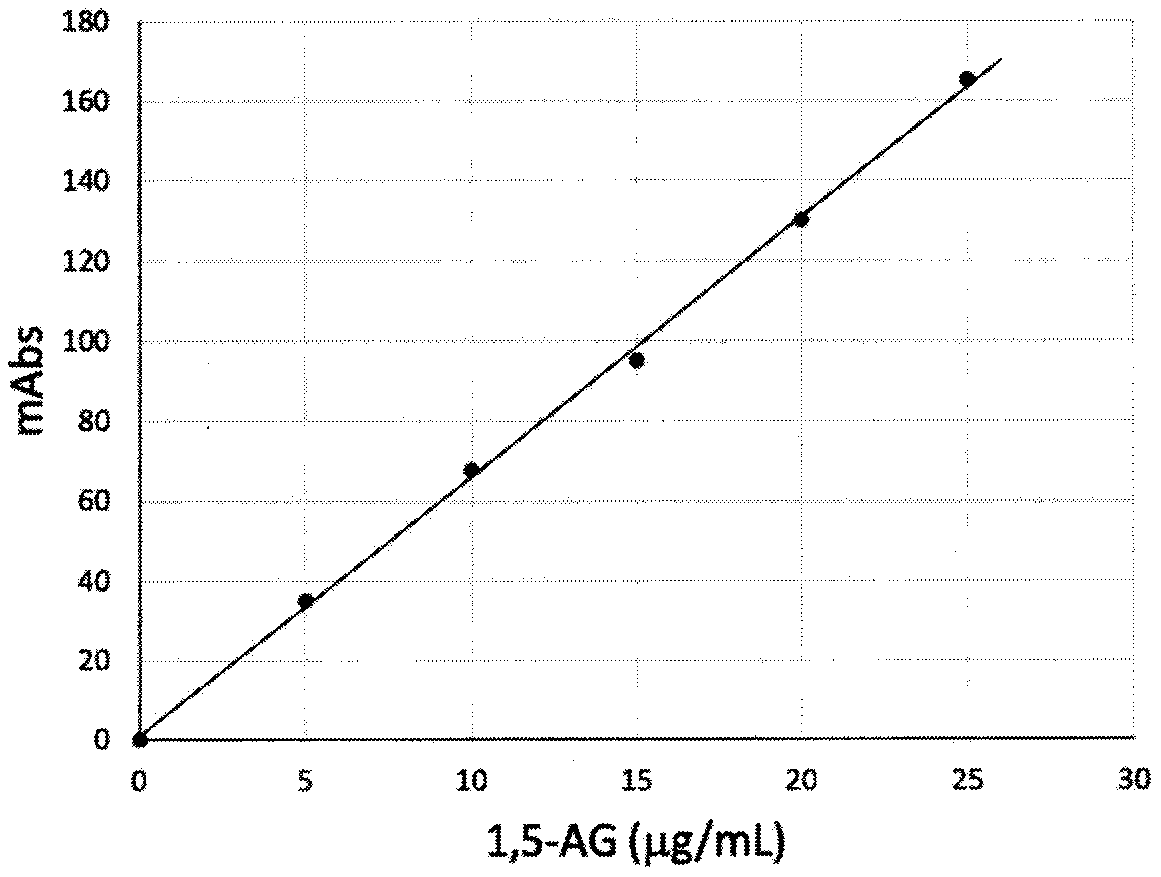Zymologic quantification method for 1,5-anhydroglucitol, and quantification reagent adopted by zymologic quantification method
An anhydroglucitol and anhydroglucose technology, applied in 1 field, can solve the problems of inaccurate determination, difficulty in obtaining the optimal reaction conditions of all tool enzymes, low content, etc., and achieve the effect of eliminating interference
- Summary
- Abstract
- Description
- Claims
- Application Information
AI Technical Summary
Problems solved by technology
Method used
Image
Examples
Embodiment 2
[0068] Prepare a reagent for quantifying 1,5-anhydroglucitol with the following composition:
[0069] Reagent 1
[0070]
[0071] Reagent 2
[0072]
Embodiment 3
[0074] Dilute the 25 μg / mL standard solution of 1,5-anhydroglucitol into 5 solutions with different concentrations as samples, add 240 μL of reagent 1 in Example 2 to 6 μL of sample and pure water, and act on 5 at 37 °C Minutes, then add 80 μL of reagent 2 in Example 2, and make it react for 5 minutes, record the measured absorbance at 540nm, and draw a standard curve as figure 1 shown.
PUM
 Login to View More
Login to View More Abstract
Description
Claims
Application Information
 Login to View More
Login to View More - R&D
- Intellectual Property
- Life Sciences
- Materials
- Tech Scout
- Unparalleled Data Quality
- Higher Quality Content
- 60% Fewer Hallucinations
Browse by: Latest US Patents, China's latest patents, Technical Efficacy Thesaurus, Application Domain, Technology Topic, Popular Technical Reports.
© 2025 PatSnap. All rights reserved.Legal|Privacy policy|Modern Slavery Act Transparency Statement|Sitemap|About US| Contact US: help@patsnap.com



